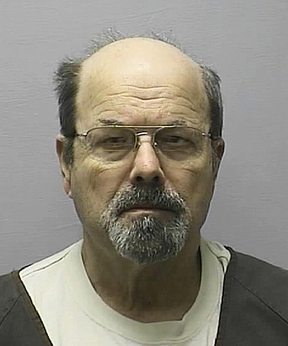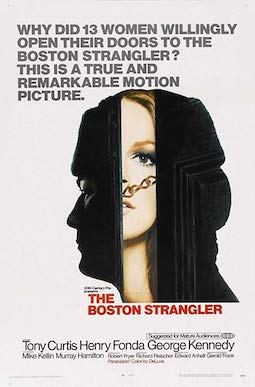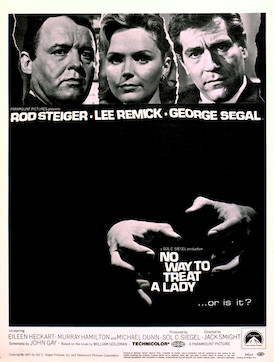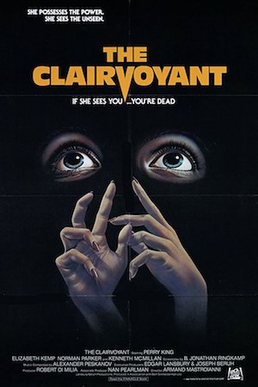
Jeffrey Lionel Dahmer, also known as the Milwaukee Cannibal or the Milwaukee Monster, was an American serial killer and sex offender who killed and dismembered seventeen males between 1978 and 1991. Many of his later murders involved necrophilia, cannibalism, and the permanent preservation of body parts—typically all or part of the skeleton.

Dennis Lynn Rader, also known as BTK, is an American serial killer who murdered at least ten people in Wichita and Park City, Kansas, between 1974 and 1991. Although Rader occasionally killed or attempted to kill men and children, he typically targeted women. His victims were often bound, sometimes with objects from their homes, and either suffocated with a plastic bag or manually strangled with a ligature.
Alison May Campbell Parrott was an 11-year-old girl who was lured out of her home by a male phone caller in Toronto, Ontario, Canada. Her remains were found two days later in a densely wooded area of Kings Mill Park.
Black Angel is a 1946 American film noir starring Dan Duryea, June Vincent and Peter Lorre. Directed by Roy William Neill, it was his final feature film. Produced by Universal Pictures, it is set in Los Angeles and broadly adapted from Cornell Woolrich's 1943 novel The Black Angel.

Tightrope is a 1984 American neo-noir psychological mystery crime action thriller film directed and written by Richard Tuggle and produced by and starring Clint Eastwood.

The January Man is a 1989 American neo-noir thriller comedy film directed by Pat O'Connor from a screenplay by John Patrick Shanley.
Robert Charles Browne is an American murderer who is currently serving two life sentences for the murders of two teenage girls in Colorado Springs, Colorado, committed in 1987 and 1991, respectively. A few years into his sentence, he sent letters to the El Paso County Sheriff's Office in which he claimed to be a serial killer who has killed approximately 48 or 49 people since 1970 across several states.

The Cincinnati Strangler was the name given to an American serial killer responsible for the murder of seven women in Cincinnati, Ohio, between December 1965 and December 9, 1966. During the investigation, a local resident, Posteal Laskey Jr., was declared the main suspect in the killings and was arrested on December 9, 1966, for one of the murders for which he was subsequently convicted. Although he was never charged with the other murders, the media and police blamed him for the other deaths since according to the official version of the investigators, the murders ceased after his arrest.

The Boston Strangler is a 1968 American biographical crime drama film directed by Richard Fleischer and starring Tony Curtis, Henry Fonda, George Kennedy, Mike Kellin, Murray Hamilton, Sally Kellerman and William Hickey. It is loosely based on the true story of the Boston Strangler and the 1966 book of the same name by Gerold Frank.

The Night Stalker is an American made for television horror film which aired on ABC on January 11, 1972, as their ABC Movie of the Week. In the film, an investigative reporter, played by Darren McGavin, comes to suspect that a serial killer in the Las Vegas area is actually a vampire.

William Paul Lundigan was an American film actor. His more than 125 films include Dodge City (1939), The Fighting 69th (1940), The Sea Hawk (1940), Santa Fe Trail (1940), Dishonored Lady (1947), Pinky (1949), Love Nest (1951) with Marilyn Monroe, The House on Telegraph Hill (1951), I'd Climb the Highest Mountain (1951) and Inferno (1953).

No Way to Treat a Lady is a 1968 American psychological thriller film with elements of black comedy, directed by Jack Smight, and starring Rod Steiger, Lee Remick, George Segal, and Eileen Heckart. Adapted by John Gay from William Goldman's 1964 novel of the same name, it follows a serial killer in New York City who impersonates various characters in order to gain the trust of women before murdering them.

The Playbirds is a 1978 British sexploitation film, made by Irish-born director Willy Roe and starring 1970s pin-up Mary Millington alongside Glynn Edwards, Suzy Mandel and Windsor Davies. It was the official follow-up to Come Play with Me, one of the most successful of the British sex comedies of the 1970s, which also starred Millington.

Eyes of a Stranger is a 1981 American slasher film directed by Ken Wiederhorn, and starring Lauren Tewes and Jennifer Jason Leigh. Its plot follows a newscaster in Miami who suspects that her neighbor may be a local rapist and serial killer. It features makeup effects by Tom Savini.

A Quiet Place in the Country is a 1968 giallo thriller film directed by Elio Petri, and starring Franco Nero and Vanessa Redgrave. Based on the short story "The Beckoning Fair One" by Oliver Onions, its plot follows an artist who relocates to a rural villa with his girlfriend, where he begins to experience increasingly terrifying, apparently supernatural events.

Rodney James Alcala was an American serial killer and sex offender who was sentenced to death in California for five murders committed between 1977 and 1979, receiving an additional sentence of 25 years to life after pleading guilty to two further homicides committed in New York State in 1971 and 1977. While he has been conclusively linked to eight murders, Alcala's true number of victims remains unknown and could be much higher – authorities believe the actual number is as high as 130.

Glen Edward Rogers, is an American convicted serial killer. He was also convicted of related crimes in Florida and California, such as armed robbery, grand theft auto, and arson.

The Clairvoyant is a 1982 American psychological horror film directed by Armand Mastroianni and starring Perry King, Norman Parker, and Elizabeth Kemp. The plot follows a New York City detective and his friend who pursue a mysterious "handcuff killer" with the aid of an artist who sees—and draws—the killer's crimes before they are committed.

Disconnected is a 1984 American psychological slasher film produced and directed by Gorman Bechard, written by Bechard and Virginia Gilroy, and starring Frances Raines, Mark Walker, and Carl Koch. Its plot follows Alicia, a young video rental store clerk in a small Connecticut town who is tormented by bizarre, unearthly phone calls. Meanwhile, a string of violent serial killings are occurring amongst locals.

Robert Willard Liberty, known as The Candlelight Killer, was an American serial killer who murdered two men in Southern California from March to June 1970 in ritualistic style, and left taunting messages behind for authorities to find. Liberty had spent three years in a mental hospital prior to the murders for killing his girlfriend in 1966. In 1971, while awaiting trial for the new killings, Liberty was murdered by a fellow inmate.
















